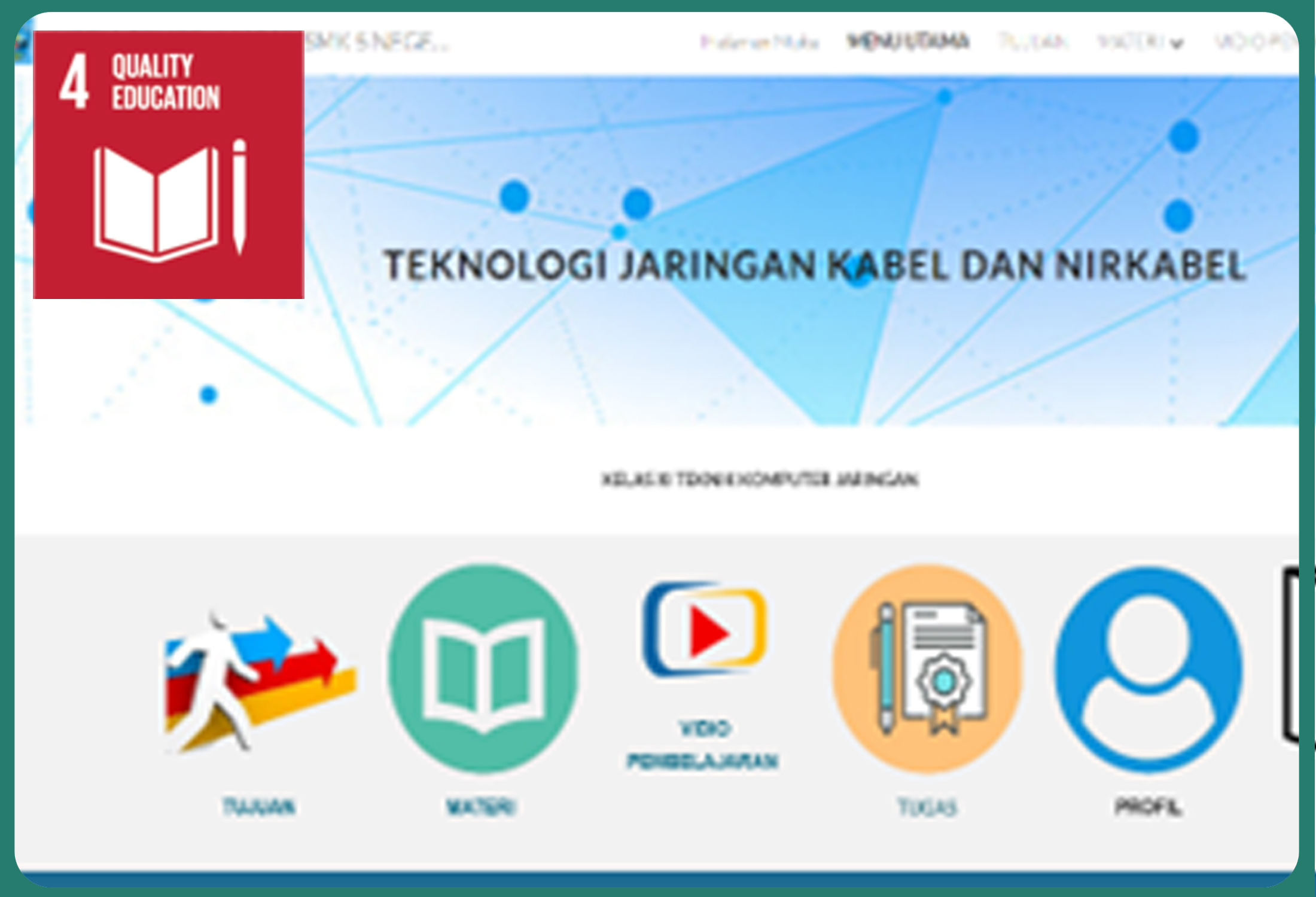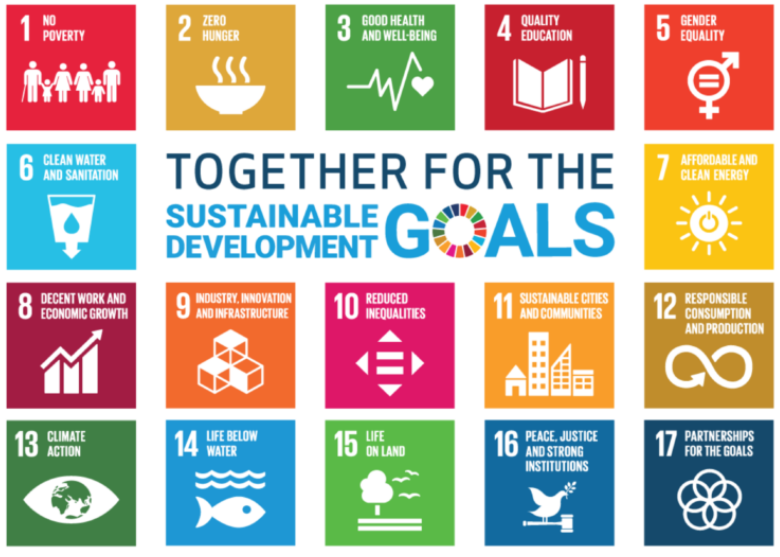Design and Development of Google Sites-Based Interactive Learning Media for Wired and Wireless Network Technologies
DOI:
https://doi.org/10.24036/javit.v5i1.236Keywords:
Learning Media, Google Sites, Network Technology, Vocational Education, ADDIE, Interactive LearningAbstract
The advancement of Information and Communication Technology (ICT) has significantly reshaped education, prompting the integration of technology-based learning media to improve instructional quality. Tools such as visual graphics, interactive texts, and educational videos enhance student comprehension and engagement. Google Sites, a free web-based platform, offers flexibility for delivering content across varied learning environments without requiring additional software. This study developed interactive learning media using Google Sites to support instruction in wired and wireless network technologies within vocational education. Employing the ADDIE model (Analysis, Design, Development, Implementation, and Evaluation), the research addressed the lack of interactive media and students' difficulties in grasping technical concepts. The resulting platform integrates texts, diagrams, video tutorials, and quizzes in a modular format suitable for both classroom and independent learning. Evaluation findings showed that 93% of students found the media easy to use, and 90% reported improved understanding. The study demonstrates a scalable approach to ICT-based learning and contributes to enhancing competency-based instruction in vocational contexts with limited infrastructure.
Downloads
References
C. Zhang, I. Khan, V. Dagar, A. Saeed, and M. W. Zafar, “Environmental impact of information and communication technology: Unveiling the role of education in developing countries,” Technol. Forecast. Soc. Change, vol. 178, p. 121570, May 2022, https://doi.org/10.1016/j.techfore.2022.121570.
M. A. Kurniawati, “Analysis of the impact of information communication technology on economic growth: empirical evidence from Asian countries,” J. Asian Bus. Econ. Stud., vol. 29, no. 1, pp. 2–18, Feb. 2022, https://doi.org/10.1108/JABES-07-2020-0082.
L. Vinet and A. Zhedanov, “A ‘missing’ family of classical orthogonal polynomials,” J. Phys. A Math. Theor., vol. 44, no. 8, pp. 1–14, 2011, https://doi.org/10.1088/1751-8113/44/8/085201.
M. Imran and N. Almusharraf, “Digital Learning Demand and Applicability of Quality 4.0 for Future Education: A Systematic Review,” Int. J. Eng. Pedagog., vol. 14, no. 4, pp. 38–53, Jul. 2024, https://doi.org/10.3991/ijep.v14i4.48847.
M. Alenezi, S. Wardat, and M. Akour, “The Need of Integrating Digital Education in Higher Education: Challenges and Opportunities,” Sustain., vol. 15, no. 6, p. 4782, Mar. 2023, https://doi.org/10.3390/su15064782.
M. A. Mohamed Hashim, I. Tlemsani, and R. Matthews, “Higher education strategy in digital transformation,” Educ. Inf. Technol., vol. 27, no. 3, pp. 3171–3195, Apr. 2022, https://doi.org/10.1007/s10639-021-10739-1.
S. Timotheou et al., “Impacts of digital technologies on education and factors influencing schools’ digital capacity and transformation: A literature review,” Educ. Inf. Technol., vol. 28, no. 6, pp. 6695–6726, Jun. 2023, https://doi.org/10.1007/s10639-022-11431-8.
V. Maphosa, “Teachers’ Perspectives on Remote-based Teaching and Learning in the COVID-19 Era: Rethinking Technology Availability and Suitability in Zimbabwe,” Eur. J. Interact. Multimed. Educ., vol. 2, no. 1, p. e02105, Feb. 2021, https://doi.org/10.30935/ejimed/9684.
S. Sudarmo, A. Arifin, P. Jacob Pattiasina, V. Wirawan, and A. Aslan, “The Future of Instruction Media in Indonesian Education: Systematic Review,” AL-ISHLAH J. Pendidik., vol. 13, no. 2, pp. 1302–1311, Aug. 2021, https://doi.org/10.35445/alishlah.v13i2.542.
N. Tarissa Ayu and N. Budiwati, “The Influence of Interactive Media Based on Information Technology on the Learning Effectiveness of Students,” J. Pendidik. Ekon. Indones., vol. 7, no. 1, pp. 74–90, May 2025, https://doi.org/10.17509/JPEI.V7I1.78136.
R. Ariyanto, B. Haryadi, M. Harlanu, J. H. Kiai Wahid Hasyim NoKm, and K. Bancak, “Development of Competency Test for Cluster Scheme of Information System-Based Network Cable Installation,” J. Vocat. Career Educ., vol. 7, no. 1, pp. 39–46, Jul. 2022, https://doi.org/10.15294/JVCE.V6I2.38122.
A. Taufik, P. Purnamawati, and A. M. Mappalotteng, “Analysis of Job Competency Needs of Computer and Information Engineering Program by Referring to KKNI in Vocational Schools,” ARRUS J. Soc. Sci. Humanit., vol. 3, no. 6, pp. 856–869, Dec. 2023, https://doi.org/10.35877/soshum2124.
M. Sofi-Karim, A. O. Bali, and K. Rached, “Online education via media platforms and applications as an innovative teaching method,” Educ. Inf. Technol., vol. 28, no. 1, pp. 507–523, Jan. 2023, https://doi.org/10.1007/s10639-022-11188-0.
MUHAMMAD AINURRIFQI, “Challenges in Implementing Educational Media in Madrasah,” Al-Iftah J. Islam. Stud. Soc., vol. 5, no. 1, pp. 20–29, Jun. 2024, https://doi.org/10.35905/aliftah.v5i1.8764.
K. J. Carstens, J. M. Mallon, M. Bataineh, and A. Al-Bataineh, “Effects of Technology on Student Learning,” TOJET Turkish Online J. Educ. Technol., vol. 20, no. 1, pp. 105–113, Jan. 2021, Accessed: Jul. 02, 2025. [Online]. Available: https://files.eric.ed.gov/fulltext/EJ1290791.pdf.
A. Hinze, N. Vanderschantz, C. Timpany, S. J. Cunningham, S. J. Saravani, and C. Wilkinson, “A Study of Mobile App Use for Teaching and Research in Higher Education,” Technol. Knowl. Learn., vol. 28, no. 3, pp. 1271–1299, Sep. 2023, https://doi.org/10.1007/s10758-022-09599-6.
J. Edumadze, G. Ditlhokwa, and J. Demuyakor, “Students’ Acceptance and Perceptions of Perceived Usefulness of Mobile Learning Devices in Higher Educational Institutions,” Online J. Commun. Media Technol., vol. 12, no. 2, p. e202209, Jan. 2022, https://doi.org/10.30935/ojcmt/11539.
S. Wang and C. I. Lee, “Multimedia Gloss Presentation: Learners’ Preference and the Effects on EFL Vocabulary Learning and Reading Comprehension,” Front. Psychol., vol. 11, p. 602520, Feb. 2021, https://doi.org/10.3389/fpsyg.2020.602520.
B. Çeken and N. Taşkın, “Multimedia learning principles in different learning environments: a systematic review,” Smart Learn. Environ., vol. 9, no. 1, pp. 1–22, Dec. 2022, https://doi.org/10.1186/s40561-022-00200-2.
N. N. Vu, B. P. Hung, N. T. T. Van, and N. T. H. Lien, “Theoretical and Instructional Aspects of Using Multimedia Resources in Language Education: A Cognitive View,” pp. 165–194, 2022, https://doi.org/10.1007/978-981-16-3828-2_9.
M. Trypke, F. Stebner, and J. Wirth, “Two types of redundancy in multimedia learning: a literature review,” Front. Psychol., vol. 14, p. 1148035, May 2023, https://doi.org/10.3389/fpsyg.2023.1148035.
M. A. M. AlGerafi, Y. Zhou, M. Oubibi, and T. T. Wijaya, “Unlocking the Potential: A Comprehensive Evaluation of Augmented Reality and Virtual Reality in Education,” Electron., vol. 12, no. 18, p. 3953, Sep. 2023, https://doi.org/10.3390/electronics12183953.
J. Belda-Medina and V. Kokošková, “Integrating chatbots in education: insights from the Chatbot-Human Interaction Satisfaction Model (CHISM),” Int. J. Educ. Technol. High. Educ., vol. 20, no. 1, pp. 1–20, Dec. 2023, https://doi.org/10.1186/s41239-023-00432-3.
S. Ashraff, “Voice-based interaction with digital services.” Feb. 07, 2025. Accessed: Jul. 02, 2025. [Online]. Available: https://aaltodoc.aalto.fi/handle/123456789/134613.
Y. M. Tang, W. T. Kuo, and C. K. M. Lee, “Real-time Mixed Reality (MR) and Artificial Intelligence (AI) object recognition integration for digital twin in Industry 4.0,” Internet of Things (Netherlands), vol. 23, p. 100753, Oct. 2023, https://doi.org/10.1016/j.iot.2023.100753.
E. Navarrete, A. Nehring, S. Schanze, R. Ewerth, and A. Hoppe, “A Closer Look into Recent Video-based Learning Research: A Comprehensive Review of Video Characteristics, Tools, Technologies, and Learning Effectiveness,” Int. J. Artif. Intell. Educ. 2025, pp. 1–64, May 2023, https://doi.org/10.1007/s40593-025-00481-x.
K. V. Vlasenko, S. V. Volkov, I. V. Lovianova, I. V. Sitak, O. O. Chumak, and N. H. Bohdanova, “Exploring usability principles for educational online courses: a case study on an open platform for online education,” Educ. Technol. Q., vol. 2023, no. 2, pp. 173–187, Jun. 2023, https://doi.org/10.55056/etq.602.
Y. Bauer, “Improving Teacher’s User Experience in a Virtual Learning Environment,” 2023, Accessed: Jul. 02, 2025. [Online]. Available: https://repositorio-aberto.up.pt/bitstream/10216.
N. Md Yusof and A. Abdullah, “The efficacy of Telegram Messenger as a tool for enhancing argumentative writing among students in open and distance learning,” Asian Assoc. Open Univ. J., vol. 20, no. 1, pp. 4–16, May 2024, https://doi.org/10.1108/AAOUJ-07-2022-0091.
A. Al-Hunaiyyan, R. Alhajri, S. Al-Sharhan, and A. Bimba, “Human-Computer Interaction Perspective on Mobile Learning: Gender and Social Implications,” Int. J. Interact. Mob. Technol., vol. 15, no. 11, pp. 4–20, Jun. 2021, https://doi.org/10.3991/ijim.v15i11.21367.
R. Shaheen, A. Rasheed Soomro, and H. Ali, “Effect of Mobile Assisted Language Learning (MALL) Attitude and Practices in University Students,” J. Asian Dev. Stud., vol. 13, no. 2, pp. 101–113, May 2024, https://doi.org/10.62345/jads.2024.13.2.8.

Downloads
Published
How to Cite
Issue
Section
License
Copyright (c) 2025 Hanesa Putri Wulandari, Asrul Huda

This work is licensed under a Creative Commons Attribution 4.0 International License.










